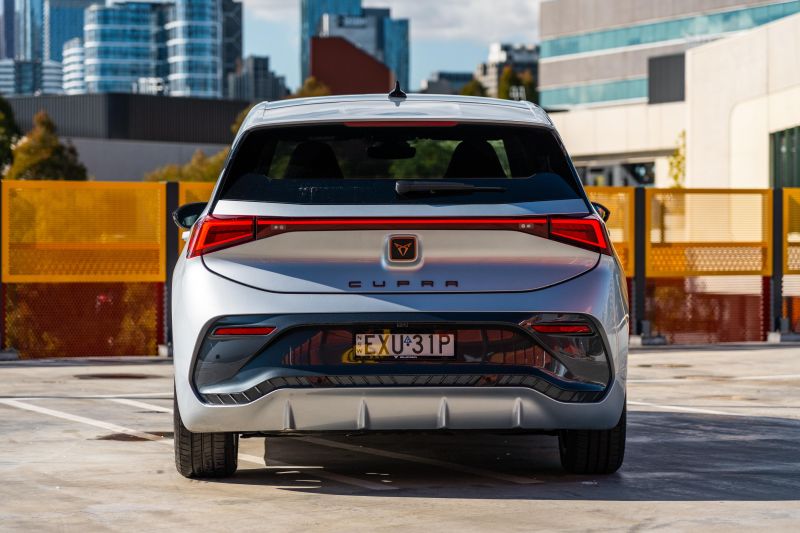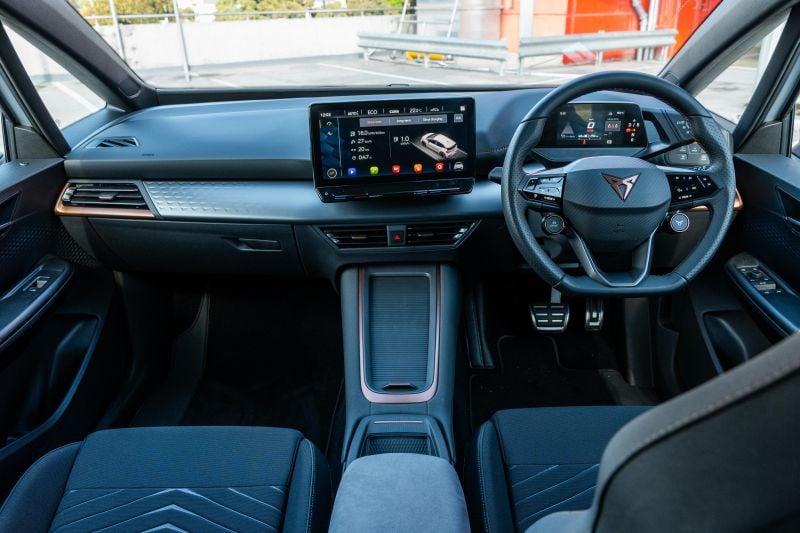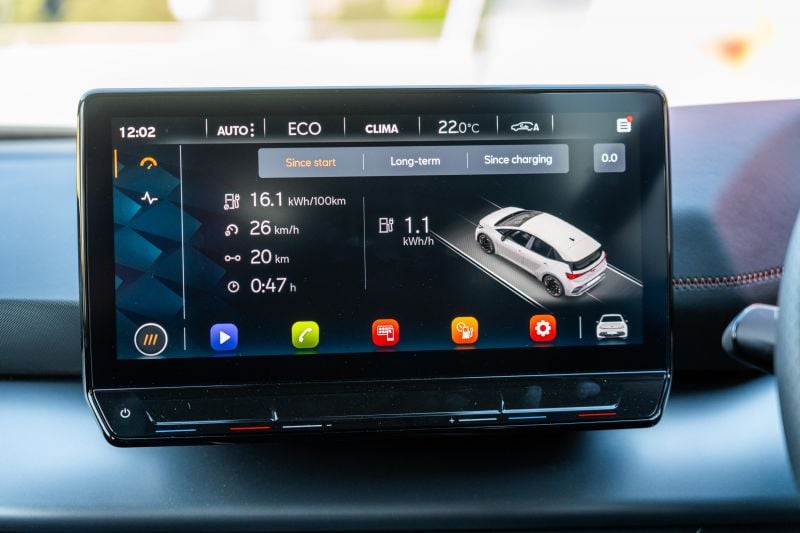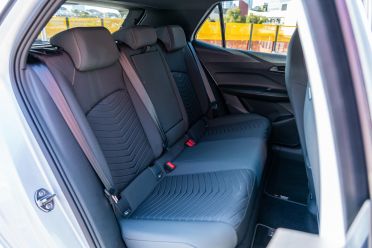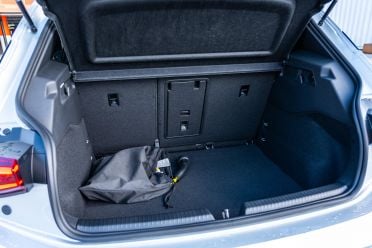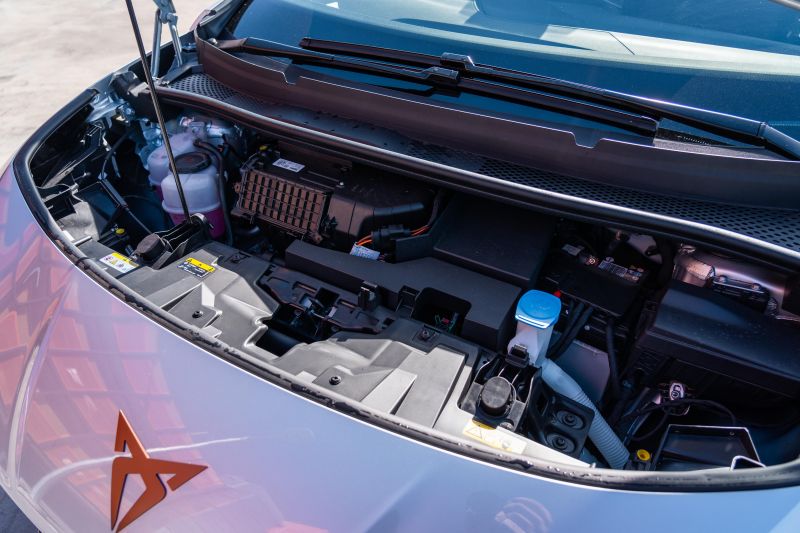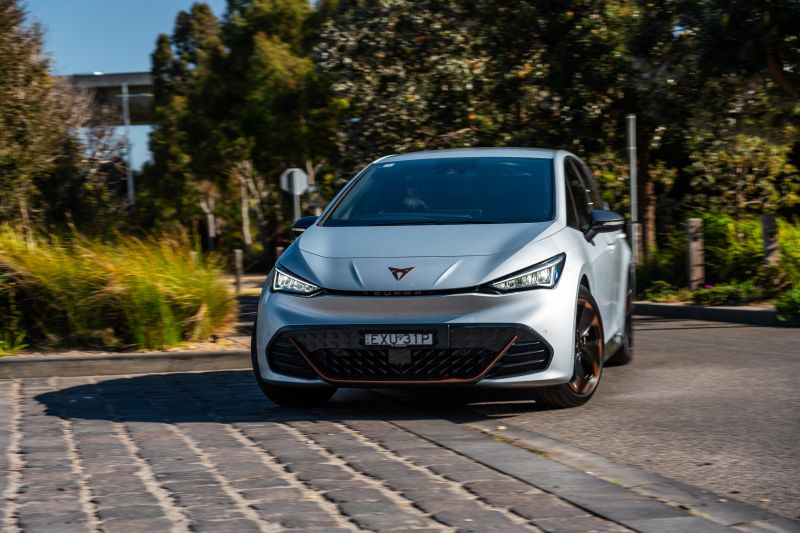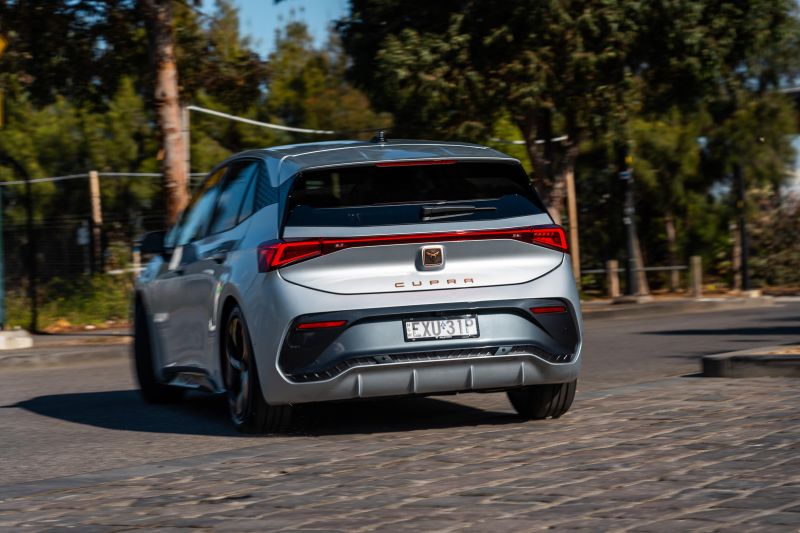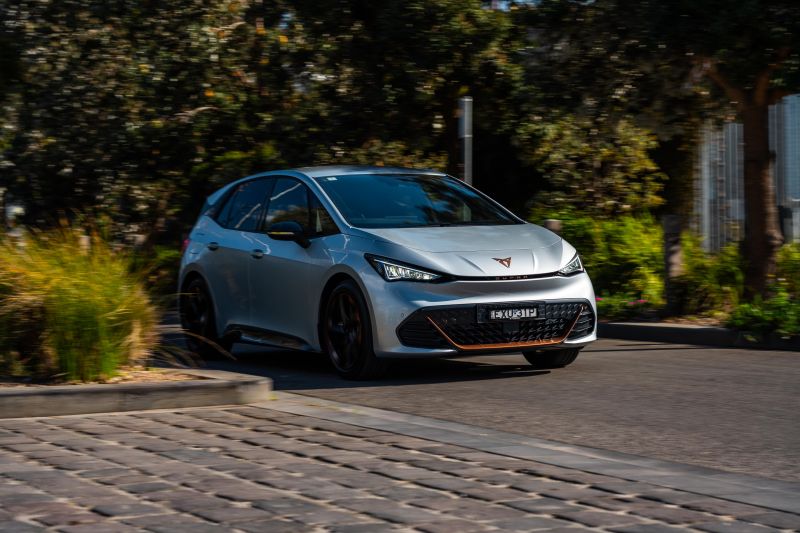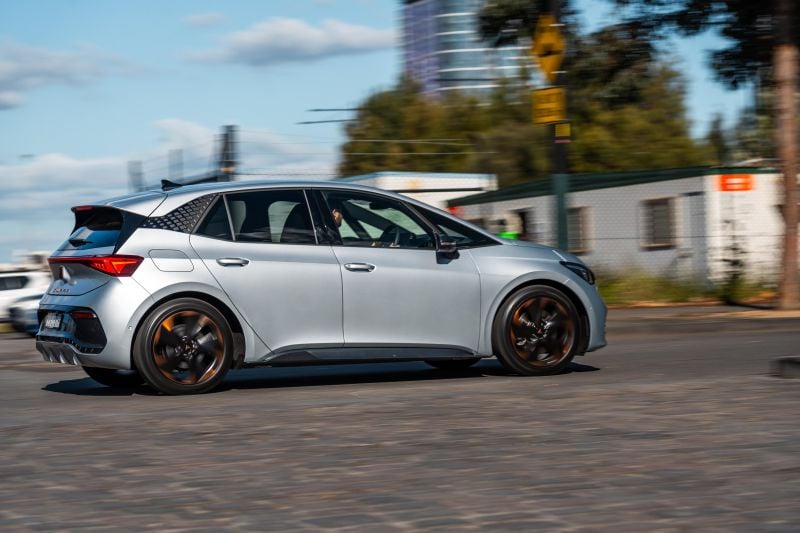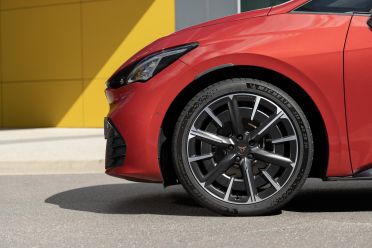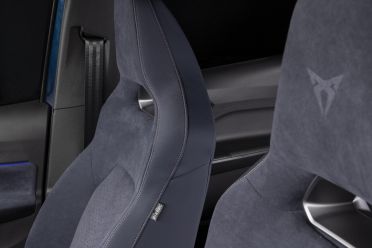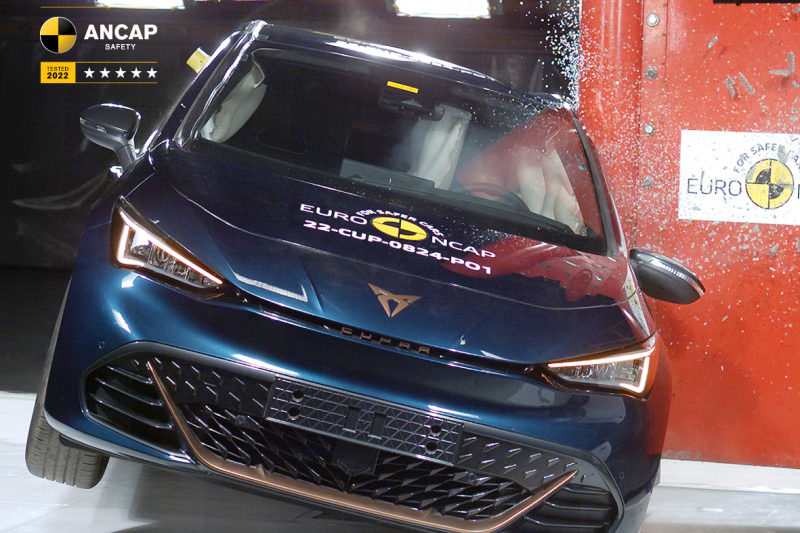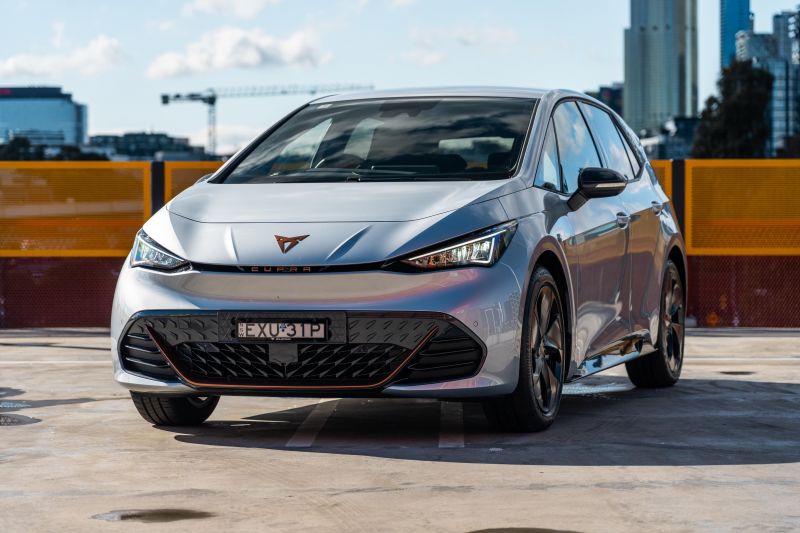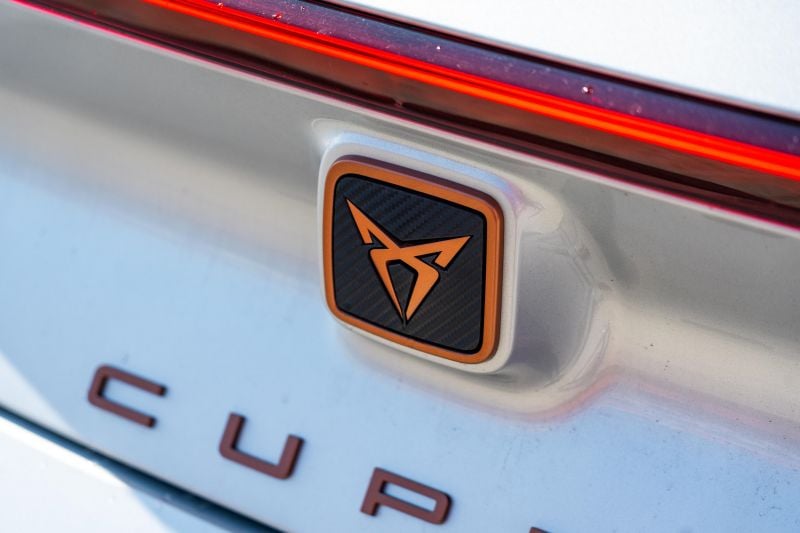A number of carmakers are now stepping up and offering Australians competitively priced electric vehicles with decent range claims and a degree of mainstream appeal.
With the Born, Cupra gets the distinction of being the first Volkswagen Group company to launch a mainstream EV in Australia, beating the Volkswagen ID.3 to the punch. A bit of a coup.
The Cupra Born brings head-turning design and proportions, agile rear-wheel drive characteristics, and a 500km driving range to the table – for a list price under the psychological $60,000 barrier.
This price is only 10 per cent more than a VW Golf GTI, for years the market’s go-to pocket rocket. We should not fall into the trap of only comparing EVs with EVs, because plenty of people are making the switch from petrol – hot hatch lovers among them.
Of course the Born also lines up up against the ubiquitous Tesla Model 3, if not in terms of cabin tech or driver-assist then at least in terms of range and performance. Cupra buyers are near-certain to be cross-shopping this pair, such is Tesla’s absolute market dominance.
Cupra Australia says it holds more than 700 orders and expects to deliver at least 1000 this year – not huge volume, but neither is it a token number released in batches here and there.
It’s a statement from a brand clearly not here to mess about at the margins.
How much does the Cupra Born cost?
The Cupra Born kicks off at $59,990 before on-road costs, which equates to drive-away pricing of between $61,990 (ACT) and $66,490 (Western Australia) depending where you live, with some States offering friendlier tax policies.
The price makes it eligible for existing State EV rebates such as $3000 discounts in NSW and SA, $3500 in WA, and $6000 in Queensland. The Cupra is also eligible for federal fringe-benefits tax exemptions for business buyers and novated lessees.
How does the Cupra Born’s list price compare to some competitors? We haven’t necessarily listed the cheapest versions of each rival, but rather those with something resembling equivalent (circa 500km) driving range.
Key rivals include:
- BYD Atto 3 Extended Range (420km): $51,011
- Kia Niro EV S (460km): $65,400
- MG 4 Long Range 77 (530km): $55,990
- Nissan Leaf e+ (385km): $61,490
- Polestar 2 RWD (518km): $67,400
- Tesla Model 3 RWD (491km): $57,400
- Volvo EX30 Extended Plus (480km): $59,990
Range claims in brackets are WLTP
This all being said, who says you need to compare EVs with other EVs? The list price of a new VW Golf GTI is $55,490, meaning if you take running costs into account the Cupra stacks up.
2023 Cupra Born pricing:
- ACT: $61,990 drive-away
- NSW: $62,490 drive-away
- QLD: $63,490 drive-away
- SA: $64,490 drive-away
- TAS: $64,490 drive-away
- VIC: $64,990 drive-away
- WA: $66,490 drive-away
Prices are drive-away
What is the Cupra Born like on the inside?
The interior is a mixed bag: it looks great, with some interesting design and trim choices and a sporty driving position, but there are also some cost-cutting scratchy plastics and an occasionally frustrating lack of switchgear.
The Born unlocks as you approach with the key in your pocket and unfolds the side mirrors.
There’s no need to press the start button – as with a Tesla, once the weight sensor in the driver’s seat detects you, the Born’s ready to start. Just twist the gear shifter control unit on the right of the small digital cluster and speedometer.
It’s small touches like this that keep things interesting.
The steering wheel is trimmed in leather with perforated hand grips, and has circular buttons to adjust your driving modes or hit the boost mode. Note the stitching that matches the bronze-coloured brand logo.
The one-piece backrest fabric seats feature a type of recycled polymer fibre fabric made from plastic waste, and are manually adjustable but offer good side and under-thigh support.
The bronze and silver highlights and the use of grey trim pieces add some colour and lightness to what is a nicely driver-oriented interior, though I’d love to see a Tesla-style glass roof offered.
Meanwhile the use of a dedicated EV platform means a flat floor and space for more storage in the centre tunnel than most ICE cars can offer, with a deep-but-narrow glovebox and lidded section below the vents.
The suede door and console padding and tastefully stitched dash insert feel tasteful, but on the other hand some of the hard and scratchy door and tunnel trims look and feel quite downmarket.
The 12-inch landscape-oriented centre touchscreen offers nice resolution, allows pinches and swipes like a smartphone, and brisk enough loading speeds. While key functions like the climate control are largely operated via screen menus, at least Cupra has designed easy enough shortcut icons and fitted a voice control system that works.
The infotainment offering is quite limited in terms of functions, without for example any form of satellite navigation. There’s also only wired Apple CarPlay and Android Auto via USB-C, which means you’ll need to bring your cable with you if you want to see any form of maps on the screen.
In Europe the Born comes with functions like connected navigation and connected smartphone services (remote climate controls, remote charge updates, vehicle status checks, vehicle location checks), but the VW Group brand lacks access to these features in Australia. That’s poor.
On the topic of gripes, I still can’t adjust to the haptic touchpads on the steering wheel in lieu of buttons – Volkswagen boss Thomas Schäfer agrees with me by the way – and why aren’t the temperature and volume control touch points (mounted in the centre screen’s glossy black frame) backlit so you can see them at night!?
The back seats are quite capacious, certainly fine for adults. I ferried four adults around on some errands and heard no complaints.
It comes with rear USB-C ports, 60:40 folding seats and a flat floor, but there are no rear vents. The boot is a Golf-like 385 litres in capacity, good but not great.
On the options front, those after a little more of a premium interior feel can opt for the $2900 Interior Package with blue Dinamica suede bucket seats with heating, massaging and power adjustments, as well as a better sound system than the stock five-seater setup. Vehicles with this option pack also become four-seaters rather than five-seaters.
What’s under the bonnet?
There’s no Tesla-style ‘frunk’, given there are powertrain components filling most of the under-bonnet space.
The electric motor makes a respectable 170kW of power and 310Nm of torque, driving the rear wheels – unusual since most hatches are front-drive. This is one upside of the ground-up EV platform.
The motor draws power from a large 82kWh lithium-ion battery pack (77kWh useable), promising driving range of up to 511km WLTP.
While the Cupra Born arrives with the biggest battery available, European markets get access to a cheaper, lighter and shorter-range 58kWh version – which is on the cards for Australia but not yet available. In my view this would make a great starting point.
How does the Cupra Born drive?
This is pitched as a hot hatch, with a sprightly 0-100km/h time of 7.0 seconds versus 6.4s for the Golf GTI. More telling is the 2.8-second 0-50km/h time in urban conditions: the acceleration is instant and silent, ideal for punchy lower-speed response.
The Born is based on VW’s widely used MEB platform hardware designed only for full EVs, with MacPherson strut front and multi-link rear independent suspension with passive damping and Cupra’s preferred firm spring rates.
MEB’s most unique aspect is that it’s rear-wheel drive, unlike typical FWD hot hatches. This gives it a different seat-of-the-paints feel in terms of the way it rotates, and responds to in-corner acceleration.
While it’s a heavy hot hatch at 1927kg tare, it doesn’t particularly feel that way, with a respectable degree of agility built in, and sharp response to quick directional changes.
The ride quality with 19-inch wheels on ‘self-sealing’ Bridgestone tyres and passive damping is firm but not unfairly so. It offers the driver a veneer of isolation from road bumps and lumps, without feeling detached.
If it weren’t for the slightly lifeless progressive electric steering system it would be an ‘A plus’, but as it stands it’s still quite a fun thing to throw around in stock guise. Not all EVs do that part well at all…
The good news is there’s a Cupra Born option for real driving enthusiasts. The optional $2600 Performance Package adds stickier Michelin Pilot Sport 4 tyres on 20-inch wheels, and Dynamic Chassis Control dampers.
Granted you lose a bit of range (511km of range for the standard car versus 475km with the Performance Package) but you should gain more cornering grip, steering feel, and adjustability.
While the braking system looks pretty basic (it uses rear drums like a Toyota HiLux), the electric regenerative braking does much of the heavy lifting. You can ramp up resistance by twisting the gear shifter into ‘B’ mode, though it won’t bring you to a complete stop.
I’d like more regenerative brake settings operated via paddles, like you get in other EVs, with one pedal driving capability.
Another feature missing in the Born that we’d have expected is proactive lane-centring on highways; instead, the lane-keeping aid is the type that steers you away from road lines when you veer too close.
This absence of this partial highway autonomy system (which VW calls Travel Assist) as well as the lack of Traffic Sign Recognition with intelligent speed limiting, are further gripes with the specs package overall.
While we detail running costs and energy use further down, the 511km claimed driving range is exceptionally long at this price point, and should be achievable with some care. My energy use varied between 14 and 17kWh per 100km.
On a quirk-related note, there are two: the sequential or opposed-type wipers mounted at each windscreen lower edge cover more real estate than regular wipers; and the retro front quarter windows are a nice touch, giving you better views through corners.
What do you get?
Cupra Born highlights:
- 19-inch Black/Copper Typhoon alloy wheels
- Tyre pressure monitoring
- LED headlights
- LED tail lights
- Fog lights integrated into headlights
- Dusk-sensing headlights
- Light Assist (auto high-beam)
- Heated, power folding mirrors
- Rear privacy glass
- Rear roof spoiler
- 5.3-inch Digital Cockpit
- 12-inch touchscreen infotainment system
- Apple CarPlay, Android Auto (wired)
- DAB+ digital radio
- Wireless phone charger
- 2 x front, 2 x rear USB-C ports
- Leather multifunction steering wheel
- Satellite buttons for drive modes
- Ambient interior lighting
- SEAQUAL cloth front bucket seats
- Floor mats
- Driving profile selection
- Sports suspension
- Progressive steering
- Keyless entry, start
- Alarm system
- Auto-dimming rear-view mirror
- Dual-zone climate control
- Aluminium pedals
- Rain-sensing wipers
- Parking sensors front, rear
- Top View Camera (360-degree)
Beyond the lack of connected features/updates, navigation and wireless phone mirroring flagged earlier, the spec sheet is also missing add-ons like a glass roof and augmented reality head-up display – likewise available in Europe.
There are two Australian market options packages as follows:
Interior Package – $2900
- Aurora Blue Dinamica bucket front seats with:
- Heating, 12-way power adjustment, massaging
- 4-seat cabin layout
- Beats 9-speaker sound system upgrade
- Heated windscreen washer jets
Performance Package – $2600
- Dynamic Chassis Control damper settings
- 20-inch alloy wheels
- Michelin Pilot Sport 4 tyres, repair kit
- 4-seat cabin layout
Colours
- Vapor Grey
- Glacial White
- Geyser Silver
- Rayleigh Red
- Quasar Grey
- Aurora Blue – $475 extra
Is the Cupra Born safe?
The Born achieved the maximum five-star ANCAP safety rating with a 2022 date stamp.
It scored 93 per cent for adult occupancy protection, 89 per cent for child occupant protection, 73 per cent for vulnerable road user protection, and 80 per cent for safety assist features.
Standard safety features include:
- 7 airbags incl. front-centre
- AEB incl. Pedestrian, Cyclist detection
- Adaptive cruise control
- Driver fatigue monitoring
- Lane Assist
- Lane departure warning
- Lane keep assist
- Park Assist
- Parking sensors front, rear
- Proactive passenger protection
- Side Assist
- Blind-spot monitoring
- Rear cross-traffic alert
- Exit Warning
There are some features missing though, which are offered in Europe. These include Traffic Sign Recognition and Travel Assist – a semi-autonomous highway cruising system with lane-centring aid. Again not ideal.
How much does the Cupra Born cost to run?
The Type 2/CCS charging port is on the rear-right-hand-side of the vehicle.
It can charge at 11kW AC and up to 170kW DC, and comes with a standard Mode 3 cable and optional Mode 2 accessory. Cupra partners with JET Charge to install home wallboxes for customers who have off-street parking.
For a little context I added around three-quarters charge at 400V (56.05kWh to be precise) on a Chargefox DC charger in 48 minutes, peaking at 100kW and tapering off above 90 per cent charge to protect the battery. I never got close to 170kW.
Total cost was $33.63, but keep in mind you pay a steep premium for public charging. If you plan on home charging from the grid you’d be wise to look at the various EV energy cost offers out there from suppliers in your area.
I was impressed with the Cupra’s efficiency, averaging just under 15kWh per 100km in urban driving with lots of regenerative braking (making the 500km claim entirely plausible), climbing to 17.5kWh per 100km over a long country drive.
For those afraid EVs will ruin the Aussie road trip, I did 285km on a sunny Sunday and still had an indicated 160km range remaining. We sat at 100-110km/h the whole way with two passengers and gear, in 10-15 degree weather, and I made no real effort to conserve energy (heater on, driving style normal through hills etc).
Cupra Australia provides a five-year, unlimited kilometre warranty; while there’s a separate eight-year, 160,000km warranty on the battery covering “excessive loss of net battery energy”. This is industry standard.
You can buy a three-year service package for $990 or a five-year service package for $1590, at intervals of 12 months or 15,000km.
You can order your Born online, or at a Cupra Garage (dealer): the company now has Garages in Sydney (two at the time of writing), Melbourne, Brisbane, Gold Coast, Perth, Adelaide, Canberra and Hobart.
CarExpert’s Take on the Cupra Born
The Volkswagen Group’s mass-market EV rollout begins here.
Not everyone is ready or able to make the switch to EV yet, but plenty of people who used to buy mid-level performance hatches like the Golf GTI are going to look at the Cupra Born. It’s also at the vanguard of a range of overdue rivals to the Tesla Model 3.
It looks sharp in the metal with great proportions, offers a brash and quite practical interior, and offers a bit of driving character alongside a driving range that should help people overcome lingering anxieties.
However it must be noted that Cupra Born models sold in Australia go without functions available elsewhere – things like smartphone-based features and services, OTA upgrades, wireless phone mirroring, a lane-centring aid, and connected navigation come to mind.
This means it’ll become properly excellent come mid-life update time, yet even with its flaws, it does enough things well to deserve a place on your shortlist – particularly if you want something that isn’t a Tesla at this price point, or a hot hatch with tomorrow’s drivetrain technology.
Ultimately, kudos to Cupra for achieving here what Volkswagen has not.
Click the images for the full gallery
MORE: Everything Cupra Born


